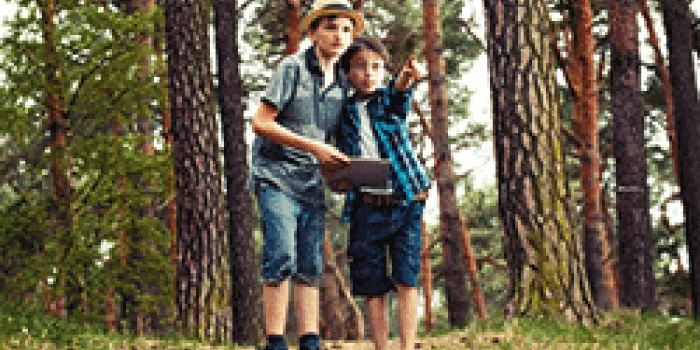Geocaching (pronounced geo-cash-ing) is an all-season activity that sends you, your family and friends on searches throughout the city or countryside. These hunts come in a variety of difficulty levels, making it a good way for anyone to exercise and socialize. Depending on your activity level, you can select the search that feels right for you. “Geocaching is a great way to get off the couch and enjoy the outdoors,” says Ruth Mulvany, PT, DPT, MS, associate professor of physical therapy at the University of Tennessee in Memphis.
How it works
Visit geocaching.com, create a free account, then search the website for geocaches—containers of varying sizes that can be hidden anywhere in your area. Pick one and enter its coordinates into a GPS device, such as your smartphone (there are apps for iOS, Android, and MicrosoftTM Windows Phone), then use those coordinates to locate the geocaches. The caches, which come in varying sizes, are stashed out of sight. It may take some careful scouring of the terrain and you may have to solve a puzzle or two, but the hunt brings rewards in time.
“Kids get excited when they find a geocache,” says physical therapist Heidi Lane, PT, DPT, PCS, who practices at Intermountain Hemophilia and Thrombosis Center in Salt Lake City, Utah. Once you find the geocache, open the container, sign the logbook inside, take the treasure and replace it with one of your own.
For the adults involved, caches often contain “travel bugs.” These are trackable dog tags imprinted with unique numbers. Your job is to take the tag, log the number on the geocaching site, then put it in a different cache. It’s interesting to follow the progress of these bugs. Some travel the world.
But first, safety
Geocaching offers more than the thrill of the hunt. You’ll also get a workout from the walking. How much walking will depend on the caches you choose to hunt. As with any new activity, talk to your healthcare team at your hemophilia treatment center (HTC) before you get started. Your physical therapist will check your joints and make any necessary recommendations. For example, you may be advised to schedule your prophy for the day that you go out and about, especially if you expect your hunt to be physically challenging. Your PT can also tell you if you will benefit from orthotics, joint supports or hiking poles.
Make sure you’re physically up for the terrain you’ll encounter. The geocache site ranks the difficulty of the terrain. One star is easy; five is difficult. But it does not always describe it in detail. If the cache is hidden in a state park, for example, visit the park’s website for details on challenges you may face, such as steep, hilly and uneven ground. The Google Earth app may be helpful for images of the places you’ll be hiking.
“Know the course and have a good map before you go,” says physical therapist Nancy Durben, PT, of the Mountain States Hemophilia Center at Oregon Health and Science University in Portland. “Find out the elevation and time demands, and add more time for safety reasons. You don’t want to be out after dark.” Also, learn how to use a compass and take one with you. “It can save your life if your cell phone GPS battery dies,” she adds.
For your first few cache hunts, choose a low terrain rating. Limit the length of your walks to what you can comfortably accomplish. Be sure to include the return trip when calculating how far you feel you can go.
Wear appropriate, good quality footwear. “For regular paved or even terrain, look for walking shoes with shock absorption and arch support,” says Mulvany. “For rugged terrain, invest in sturdy hiking boots that give you comfort, support and traction.”
No matter which hunt you choose, your time outdoors with friends and family will be good for both body and soul. “It’s a treasure hunt,” says Lane. And who doesn’t enjoy a treasure hunt, no matter your age?

